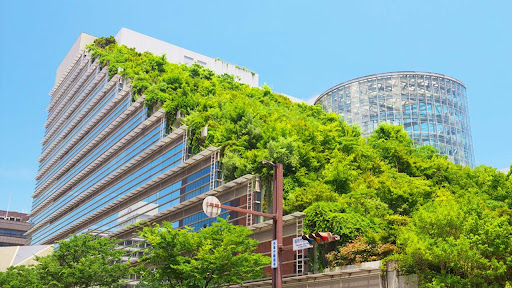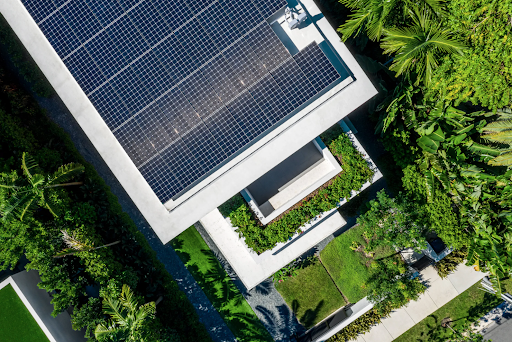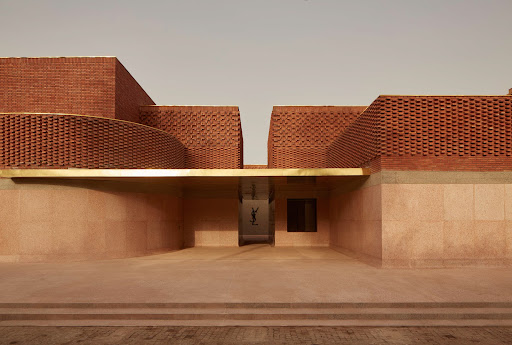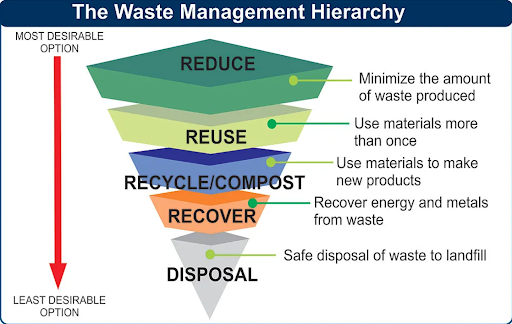
Living in harmony with the earth is emerging as a promising lifestyle choice for the modern world. A report published by Forbes in 2019 suggests that 77% of the global population wants to learn “how to live more sustainably”. This inclination towards sustainability can be further justified by the growing demand for sustainable products, organic food, and energy-efficient appliances.

Source: Eco Mom Diaries
The millennial consumer has become more aware, more action-oriented, and more responsible towards its counterpart- the environment. The principles of sustainability are being applied at various levels in the ecosystem to support holistic growth. Hence, it is safe to comment that sustainability is transforming into a necessity, and is no more a mere choice.
The Evolution of Sustainable Architecture
Sustainability is a long-standing concept in building design. There is no better teacher than nature- the learnings from which have always inspired architects to create meaningful designs. However, with the advent of technology and digitization, the principles of eco-friendly architecture had taken a back seat. But with climate change, global warming, and deforestation rising alarming concerns, sustainability has resurfaced as a significant element of architecture.
Although the disruption of nature is unavoidable while constructing new buildings, the damage can certainly be minimized. And, this fact forms the central idea of sustainable architecture, also known as green architecture. It is a building design that attempts to minimize the negative impact on the environment through eco-friendly ways.

Source: Thaiger
Events such as the outbreak of the COVID-19 pandemic have highly impacted architecture and re-established sustainability as the top design consideration. The human dependence on nature was never felt so strongly ever before, than during the pandemic. Hence, the need for connecting with the outdoors, breathing fresh air, and soaking in natural light have become prime concerns for post-pandemic architecture.
How Sustainability Can Be Achieved in Architecture
To minimize the effects of building construction on the environment, it is imperative to reduce the demand for resources. This can be achieved through conscious planning for everything that goes into the making of a building, from design to execution. Below are the most popular ways of incorporating sustainability in architecture.
Sustainability in Design
Sustainability in design can be incorporated at the grassroots level while the design is being conceptualized. While preparing the bubble diagram or zoning layout, many architects plan for a courtyard or atrium to invite natural light into the building. Passive cooling design elements such as wind tunnels, landscaping, and screens can help in reducing the energy demand of the building.

Source: The Guardian Nigeria News
You can also innovate site-specific ideas based on its macro-climate and surrounding landscape. Planning for such ideas at the ideation level helps in making the building imbibe sustainability at its core.
Sustainable Materials
Sustainable architecture is as much about materials, as it is about design and construction. Materials contribute to more than 50% of the construction cost of a building. Thus, it is important to select materials that are conducive to the growth of sustainability. A foolproof idea to identify eco-friendly materials is to look out for traditional building materials used in the site locality. Traditionally-used materials are often locally available and suitable for construction in the area.

Source: Rethinking the Future
If you seek to take your search for sustainable materials a notch higher, then you can explore materials such as Compressed Stabilized Earth Blocks (CSEB), bamboo, ferrocement, strawbale, and cork. These materials are easily available, durable, strong, and cost-effective for construction. Many green architecture practices around the globe are thriving because of their innovative use of materials and construction techniques.
Energy-Efficient Designs
If you have inculcated sustainability at the planning stage, you needn’t worry about your design’s energy efficiency. Sustainable architecture reduces the demand for energy and is often partly or fully self-reliant. Energy efficiency can be achieved by resorting to renewable forms of energy such as solar and wind for supplementing the building’s functional needs. It reduced the dependability on the supply chain to meet the energy requirements, thus serving the purpose of green architecture.

Source: Architectural Digest
In case your site is located in a tropical climate such as that of India, you can leverage solar energy. Catchment of solar energy through the installation of solar panels on-site can effectively help the day-to-day energy needs of a building. Moreso, passive cooling techniques such as the use of shading devices (chajjas, louvers, canopies) and screening help in reducing the heat gain of the building thereby reducing its mechanical cooling needs.
Integration of Landscape
The micro-climate of a site is impacted by its immediate surroundings and its internal planning. If the site is located in a suburban area with lush green farmlands around it, the chances are high that the site atmosphere would be pleasing. But, if the site is located in a bustling city center, it is likely that the site would have a warm climate because of the lack of trees. Now although these factors cannot be controlled, you can still create a pleasant site climate by the way of landscaping.
To achieve this, you can begin with planting trees that are native to the site location. You can plan water bodies on site to moderate the air temperatures. Apart from such on-site measures, many architects are opting for landscape-integrated architecture. As a result, terrace gardening, roof landscaping, and flower bed planting have become prevalent in contemporary architecture.

Source: IGS Magazine
Alongside these, the concept of green facades, living facades, or breathable facades has created quite an impression. A facade is the external skin of the building that enhances its aesthetics and is usually not a structural load-bearing member. For creating green facades, climbers or potted plants are hung on metal plates to create the appearance of oneness with nature thereby creating sustainable architecture.
Vernacular Architecture
Vernacular architecture involves the use of local and traditional architecture practices prevalent in the site location since ancient times. These practices involve the adoption of materials, construction techniques, technology building elements, and planning ideology. Studying vernacular architecture is considered to be the best-suited case study for planning any building.

Source: ArchDaily
Integration of contemporary ideas with vernacular architecture allows the creation of a relevant design that resonates with the user while being on par with the world. It also reduces the time invested in design thinking by simply allowing the architect to rely on traditional planning ways for the design. Through the adoption of vernacular architecture, you can revitalize local craftsmanship and boost the local economy of the area around your site.
Waste Management
With 600 million tons of waste generated every year globally, waste management is a key concern for the building construction industry. Right from the first day on-site until the handover, there is an ample amount of construction waste that needs to be dealt with. While much of this waste ends up in landfills, some of it can be managed responsibly through recycling and reusing. To begin with, the waste generated on-site needs to be properly segregated for disposal.

Source: USGBC West Michigan Chapter
The use of materials made by recycling waste is gaining considerable popularity as an approach to sustainable architecture. Many researchers and material brand manufacturers are innovating construction materials through waste products. Bricks, furniture, and construction panels are being made from plastic as a promising solution for waste management.
The Onset of a Holistic Design Approach
With rapid urbanization plans being proposed at the drop of a hat, sustainability has become the need of the hour. As architects, we need an environment-conscious approach to planning buildings that are responsible and responsive to the environment. As Bob Brown- the Australian politician, doctor, and environmentalist quotes, “The future will be green or not at all.”
